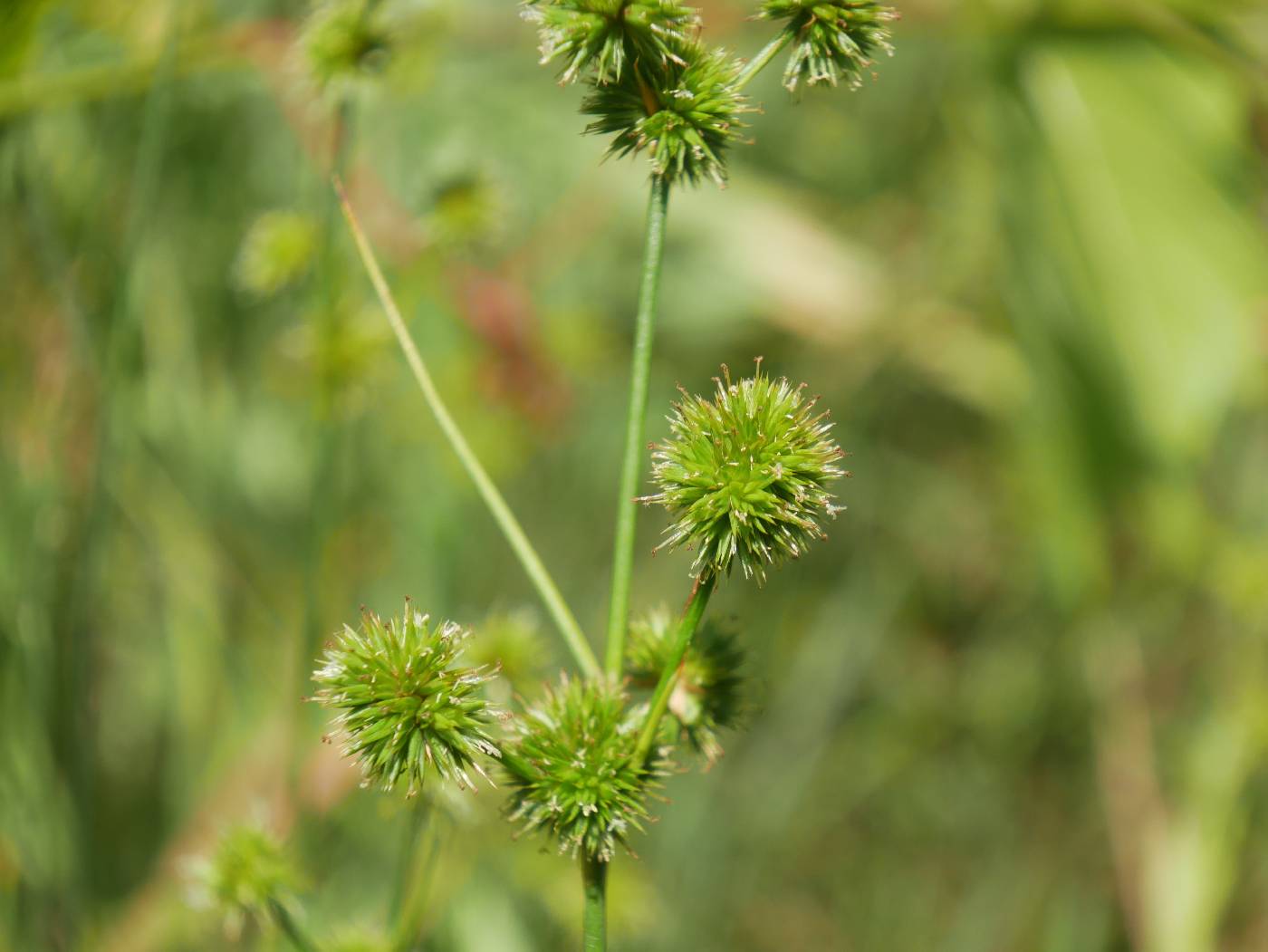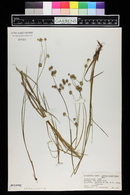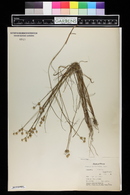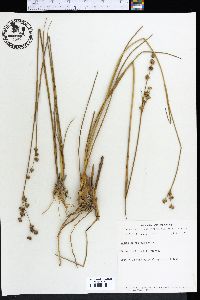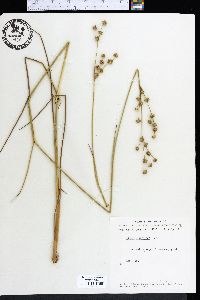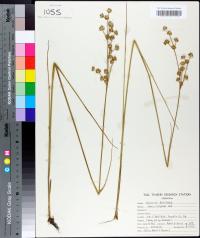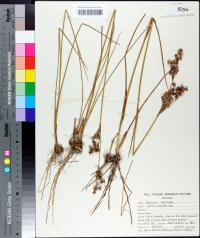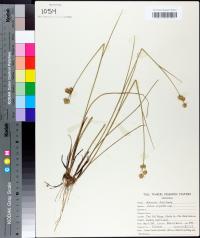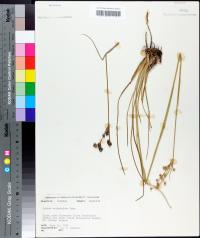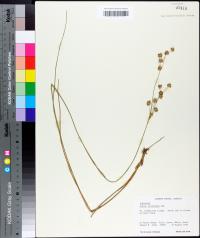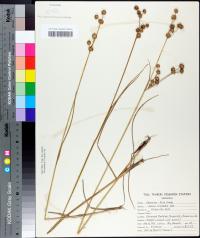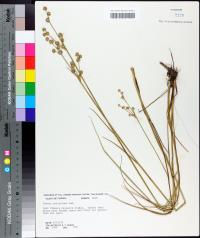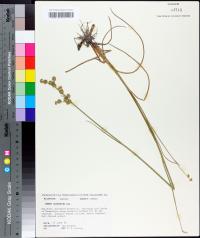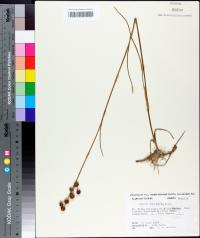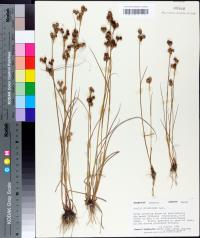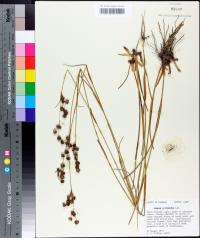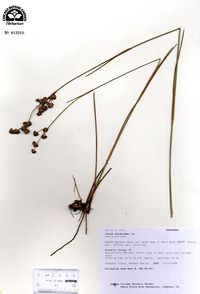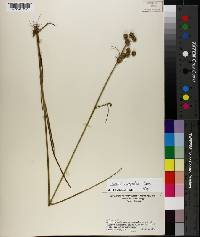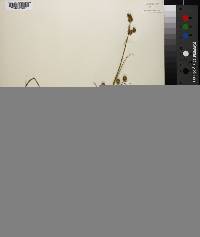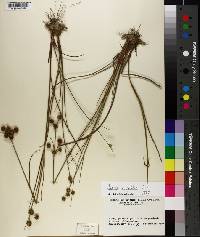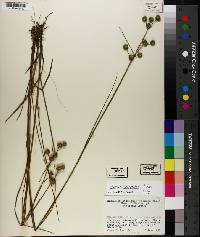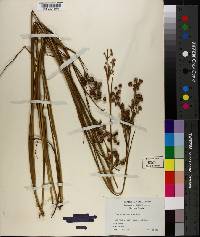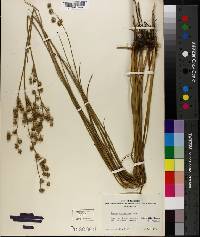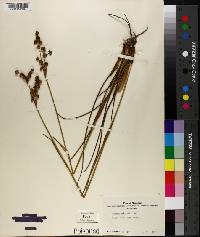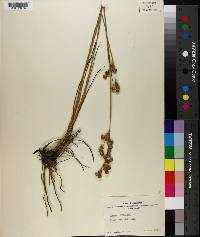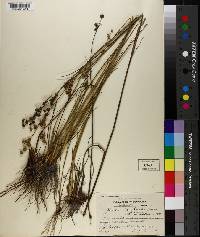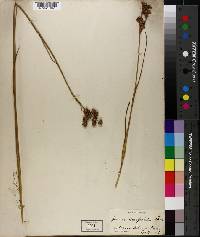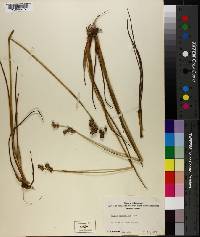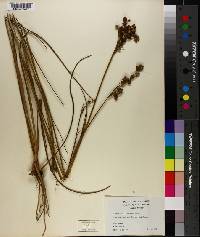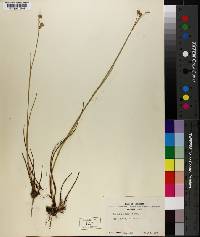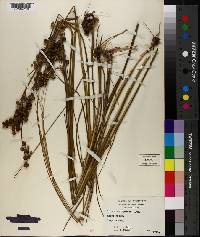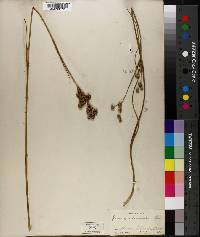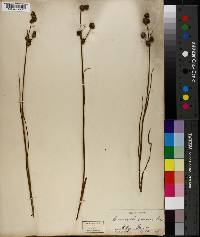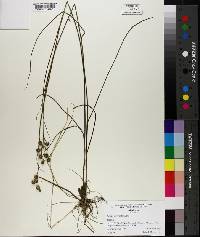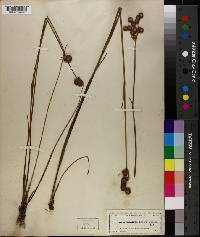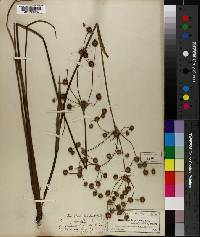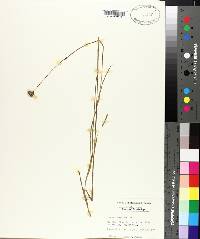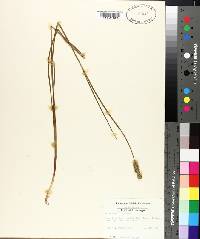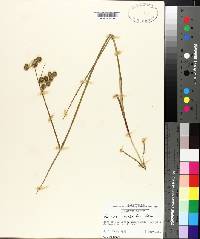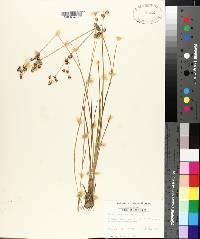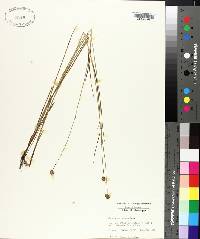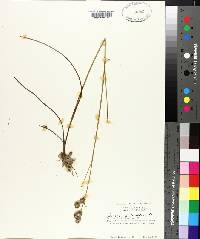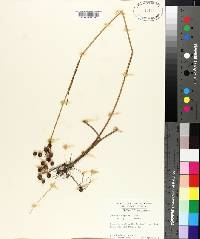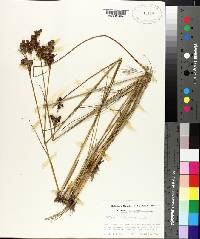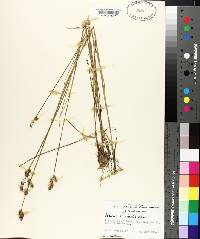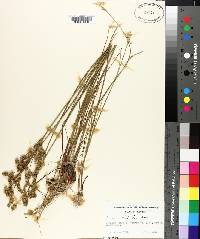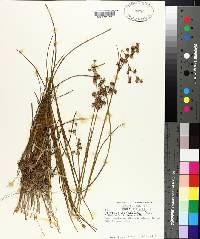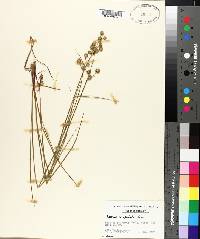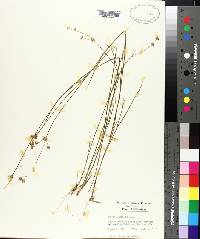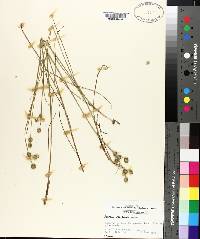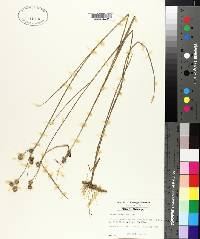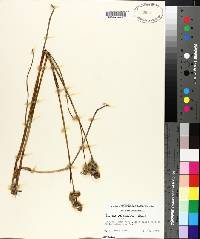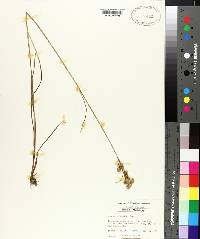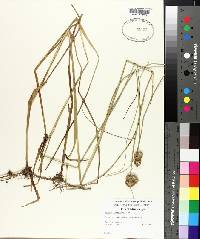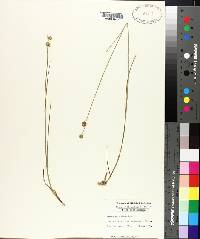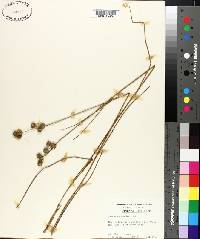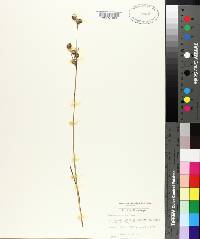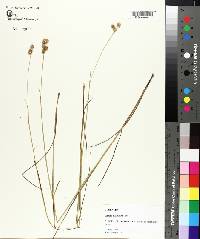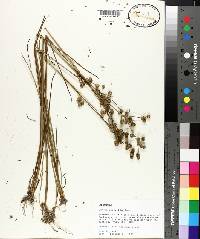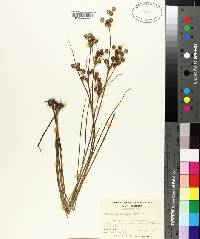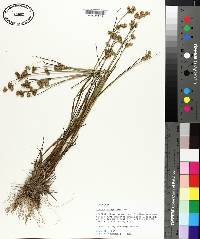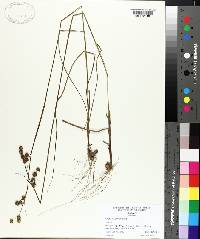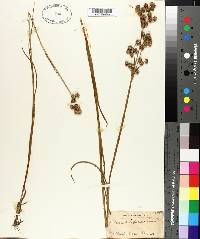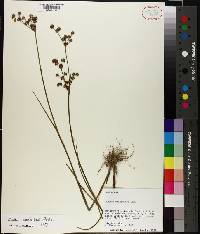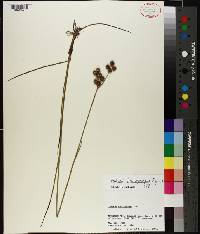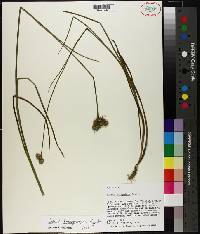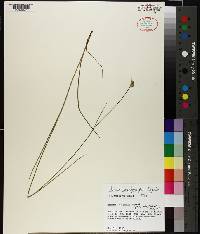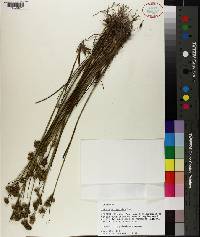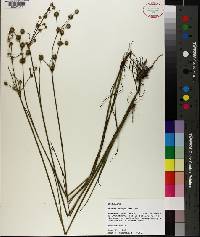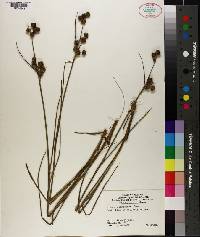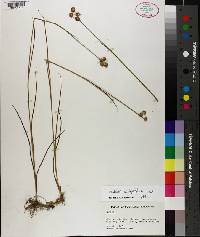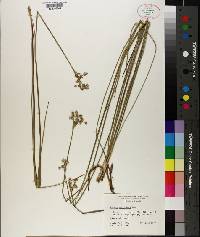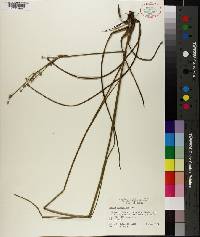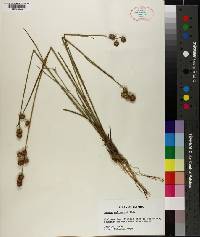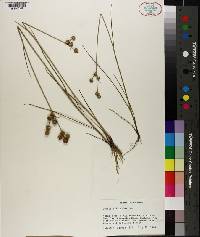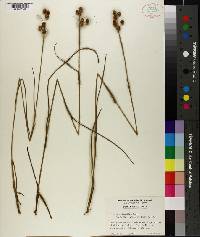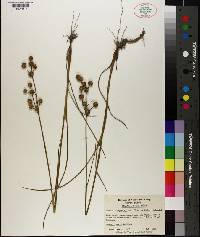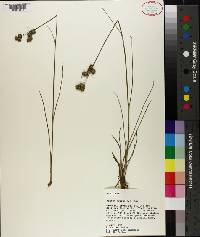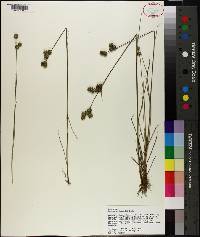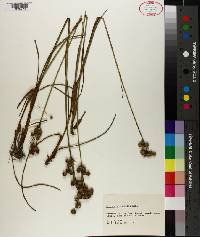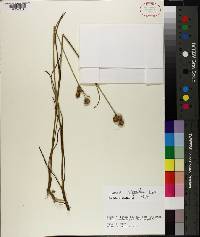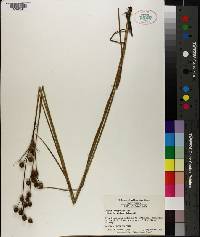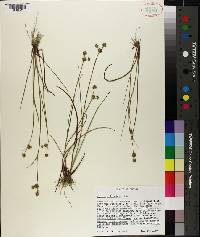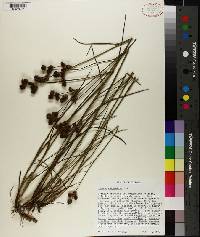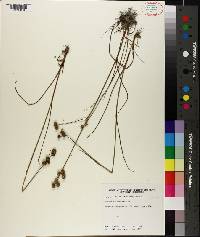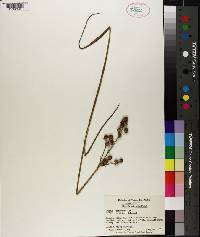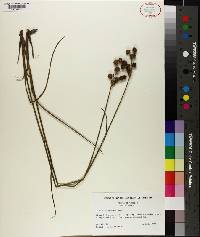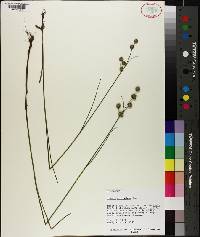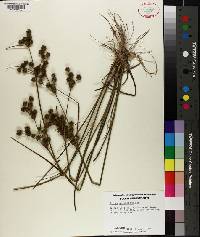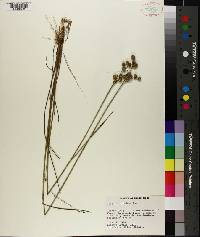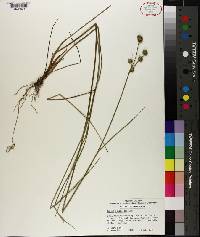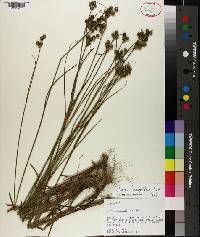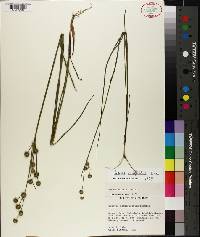Juncus scirpoides
|
|
|
|
Family: Juncaceae
Needle-Pod Rush, more...needlepod rush
[Juncus macrostemon J. Gay ex Laharpe, moreJuncus scirpoides var. echinatus (Raf.) Engelm.] |
Herbs, perennial, rhizomatous, tosometimes nearly cespitose, 0.8--7 dm. Rhizomes usually tuberous, 2--4 mm diam. Culms erect, terete, 1--3 mm diam., smooth. Cataphylls 0--1. Leaves: basal 1--2, cauline 2--3, green; auricles 1--2 mm, apex rounded, membranaceous; blade terete, 2--23 cm x 1--2 mm, distal cauline leaf blade 1.6--26 cm, equaling or longer than sheath. Inflorescences terminal panicles of 1--23(--32) heads, 2.5--9 cm, branches ascending to erect; primary bracts erect; heads 20--60-flowered, spheric or usually lobed, 6--11 mm diam. Flowers: tepals green to straw-colored, lance-subulate, 2--3.5 mm, nearly equal, apex acuminate; stamens 3, anthers 1/3 filament length. Capsules exserted, straw-colored, 1-locular, lance-subulate, 3--4 mm, apex tapering, remaining attached at tip, valves not separating at dehiscence, fertile throughout or only proximal to middle. Seeds oblong, 0.4 mm, not tailed; body clear yellow-brown. Fruiting early summer--fall. Wet sandy soil, salt marshes, lake shores, ditches, meadows, wet woods; 0--1400 m; Ala., Ark., Del., D.C., Fla., Ga., Ill., Ind., Kans., Ky., La., Md., Mich., Miss., Mo., Nebr., N.J., N.Y., N.C., Okla., Pa., S.C., Tenn., Tex., Va. , W.Va. Perennial grasslike forb 8 - 70 cm tall Leaves: one or two basal and two or three alternate on stem, green, 2 - 23 cm long, 1 - 2 mm diameter, linear, grasslike, round in cross section, and with distinct crosswise partitions inside (septate). The leaves also have a thin and membranous, basal, 1 - 2 mm long, round-tipped, ear-like appendage (auricle) at the top of the leaf sheath. Inflorescence: a terminal, 2.5 - 9 cm long, compact, erect to ascending-branched structure with branches ending in one to thirty, spheric or lobed, 0.6 - 1.1 cm diameter flower clusters. Each flower cluster is a compact head of twenty to fifty, tiny, radially symmetric flowers. Stamens: three, slightly longer than tepals, with anthers one-third the length of the filaments. Pistil: with one superior ovary, and three stigmas. Fruit: single-chambered, straw-colored, 3 - 4 mm tall (usually taller than tepals), three-angled, very narrowly lance-shaped capsules with very slender-tapering tips. The narrow, 0.5 - 1 mm long beak at top of the capsule remains attached at its tip even after parts of the capsule sides open. Stems: sometimes almost tufted, erect, smooth, round in cross section, 1 - 3 mm diameter, and arising from 2 - 4 mm diameter tuberous rhizomes. Seeds: many, clear yellow-brown, 0.4 mm long, oblong with short-pointed or abruptly narrowed tips, but without distinct narrowed tails at the ends. Tepals: six in two whorls of three, green to straw-colored, all about equal length (2 - 3.5 mm), very narrowly lance-shaped with long-tapered, slender, pointed tips. Similar species: Juncus scirpoides is often mistaken with odd plants of J. nodosus with three stamens, but that species differs by having longer anthers (at least half as long as the filaments), the outer three tepals are shorter than or about the same length as the inner three tepals, and the leaf sheath auricles are only 0.5 - 1.7 mm long. Very similar is J. brachycarpus, but its capsules are much shorter than the tepals, and the outer tepals are taller than the inner three. Also possibly confusing, though its flower heads are typically only hemispheric, is J. acuminatus, except its tepals are not as long-tapering and pointed, the capsule and tepals are about the same height, and the capsules are not nearly as slender with such long-tapered pointed tips. Flowering: June to October Habitat and ecology: Rare, localized to wet sandy shores in the dune region of the eastern Chicago Region counties. Occurence in the Chicago region: native Author: The Field Museum Stems slender, 3-8 dm, erect from stout rhizomes; lvs terete, conspicuously septate, 1-2 mm thick, the uppermost with a normal blade; auricles ovate-oblong, 1-2.5 mm; infl compact to divaricately branched, 3-12 cm, with 4-15 globose, many-fld heads 8-12 mm thick; fls eprophyllate; tep rigid, usually lance-subulate, 2.2-3.2 mm, green or turning brown in age; stamens 3; anthers shortly exsert; fr equaling or usually slightly surpassing the tep, trigonous-subulate, tapering to a prominent beak 0.5-1 mm, unilocular as in no. 31 [Juncus nodosus L.], dehiscent in the basal two-thirds. Wet sandy soil, meadows, and shores; s. N.Y. to Fla. and Tex., mostly on the coastal plain, n. in the interior to w. Ky., s. Mo., and Okla.; also in n. Ind. and sw. Mich. Gleason, Henry A. & Cronquist, Arthur J. 1991. Manual of vascular plants of northeastern United States and adjacent Canada. lxxv + 910 pp. ©The New York Botanical Garden. All rights reserved. Used by permission. From Flora of Indiana (1940) by Charles C. Deam Known in Indiana from only the dune area where it is found in open, wet sandy habitats. Of the 22 collections seen from Lake and Porter Counties only one was made later than 1913. Previous to that date the species apparently was frequent to fairly common on the dunes. No specimen could be found to confirm the reports of Barnes and of Coulter from Jefferson County. In all probability these reports were based upon collections of Juncus brachycarpus, a species common in Jefferson County and superficially resembling J. scirpoides. J. brachycarpus is the only one of all the species with small spherical heads to which Coulter's statement under J. scirpoides, "found throughout the state," is applicable. …… Indiana Coefficient of Conservatism: C = 9 Wetland Indicator Status: FACW |

